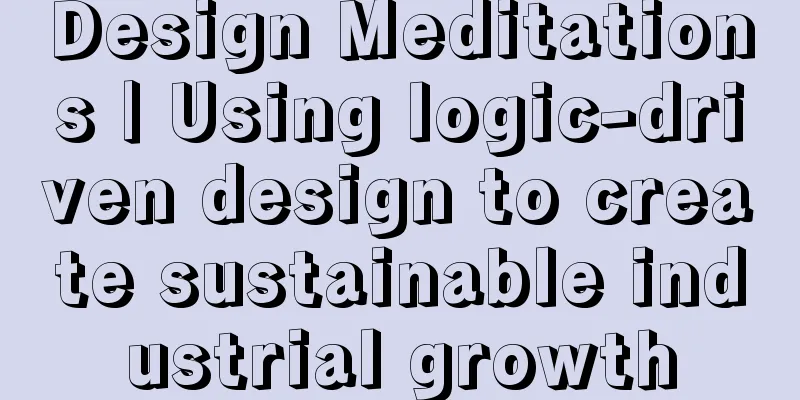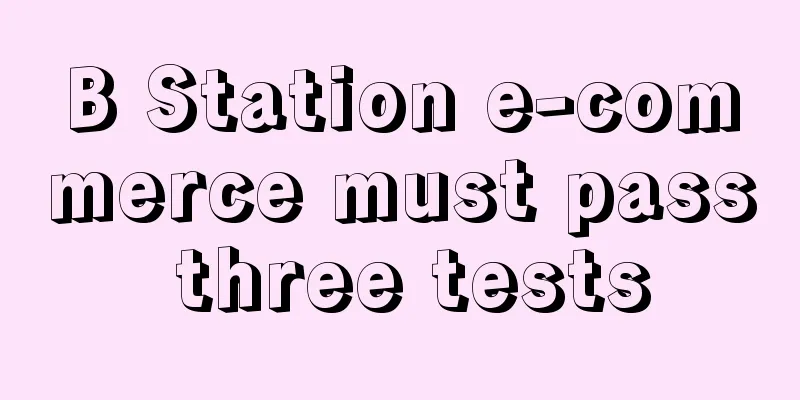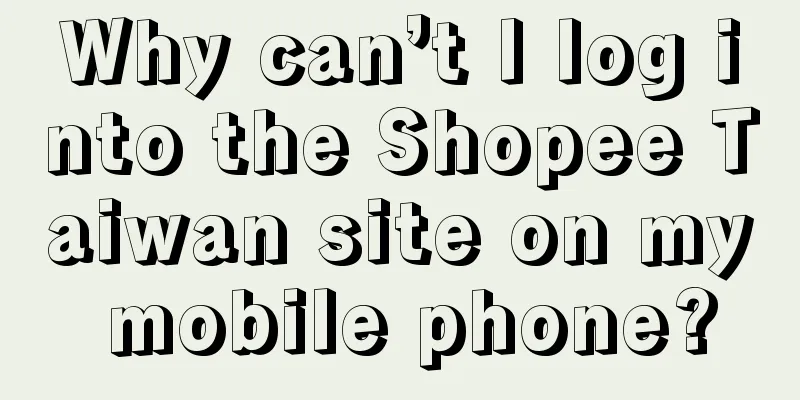Design Meditations | Using logic-driven design to create sustainable industrial growth

Before we begin, you may have this question in mind: What exactly is the design logic that we often hear? As shown in the figure above, design thinking and logic are the internal systems of designers, and are the framework and rules for solving a series of problems, just like horses can gallop and birds can fly. Galloping and flying are external presentations, and the internal system is the core that supports the external presentation. The innovation of AI has brought unprecedented efficiency improvement to "external presentation". Using AI allows us to focus more on the logic and reasoning behind the design and output more accurate and effective design strategies. From being in the design - jumping out to become the "observer" of the design. See the picture below: (🥳Full of useful information, bring a small stool and sit down) Project Background: As one of 58's core businesses, Yellow Pages is an information aggregation platform for local life service merchants on the 58app. Its business model is mainly based on merchants publishing information and users making calls. On online platforms, merchants want to highlight their own advantages and upload a large number of low-quality posters. The product sorting is chaotic and filled with various advertisements, which makes it difficult for users to find the services they are really interested in, resulting in potential loss. With the help of business strategy planning, the design team finally made progress after a long period of hard work. As the project progressed, we not only gained profits but also achieved innovation in some vertical businesses. In this process, we successfully found the code to break through the business bottleneck. Follow me and read on. 01 Design is not only about aesthetics, but also about logicLooking through some historical data before this revision, we found that there have been multiple versions of visual iterations, but these changes did not solve the fundamental problem. At the critical moment of business bottleneck, the top priority is to understand the reasons for the current user loss, as well as the user's demands and expectations. Therefore, in the experience optimization stage, we set user experience as the primary goal of the revision. From problem discovery to precise analysis, we advance step by step according to the established design logic. From user feedback, we identified their pain points, including: online advertising, lack of product quality, and trust crisis. At the same time, we also explored the expectations of potential users. Now that we have concluded the research, how do we make the right design?
Although simplifying information and simplifying processes are both effective design methods in general methods, they should be balanced and adjusted according to user needs in different scenarios. The specific approach can start with deconstruction. By focusing on clear user goals, deconstructing the original page, abstracting the user's actual focus, and reorganizing and sorting information, this design method can effectively manage complexity and help the team better master design challenges, thereby presenting excellent designs that better meet user needs. Finally, after reasonable discussion and PK, a specific plan for the launch was presented (relevant experience is needed here to make assumptions and exclusions. Not all plans need to be tested online. Designers can make rational analysis and judgment based on past experience~) After the revision, the list has a new look and achieved good results. Abandoning the original post model, by revealing the guarantee information that users care about, user evaluations, actual consultation situations and other information, users can clearly and efficiently understand the advantages and differences of different stores, helping users to better choose merchants. Is this the end of the process? Of course not! During the project verification phase, we discovered a key problem: the same page showed significant data differences in the effective strategy for the list under the comprehensive search scenario. This shows that users' demands have changed in different scenarios. So, how should we find the root cause of this problem? You can use the three-step reasoning method of where (the problem lies), why (the reason), and how (the solution) to find the most important argument for solving the problem: where (the problem) users have low conversion rates on comprehensive search pages. Why (reason) The conversion data of comprehensive search is only 1/3 of that of store mode. There may be two reasons (hypothesis): 1. The information seen in the list is the same as that in comprehensive search, which does not meet the expected results. 2. The search results are inaccurate and not what users want. 3. How (countermeasures) Check whether the search results are accurate and whether the optimization information verification brings positive benefits. At this stage, we need to further understand the user's intentions, redefine the needs - conceive ideas - deliver the design. Therefore, the design process is nonlinear (as shown below). We need to start with small, low-cost experiments, allow failure, and learn from failure. Our reflection on the results can continue to deepen our understanding of users and develop more effective design strategies. In general, this demand revision process went through multiple stages of reasoning and verification, through in-depth exploration and segmentation of user needs, and rigorous AB experiments. Externally, more attention may be paid to surface improvements, but in fact, in this process, we have carried out in-depth polishing and exploration of details, just as there is more content hidden under the iceberg. ⛏️ 02 Innovation’s best friend is “diligence”As mentioned above, the Yellow Pages store model has given great confidence to all parties after its success. However, as an aggregation platform for local services, the Yellow Pages covers more than 10 major categories and more than 200 minor categories. To achieve commercial success in the face of a wide range of categories and long-tail demands, we must wake up from the cheers of success, explore more valuable categories, and conduct personalized vertical category exploration. Traditional design methods are no longer sufficient to meet the needs of complex business exploration and innovation. With so many vertical categories, which one should we choose to design? How can designers avoid blindly following others? What is the logic behind their strategy? How can we avoid the result of making a lot of noise but getting little results? If you still work hard and focus on details like before, it is obviously not enough. Designers at this time need to have a global vision, stand at the height of the overall situation, closely follow the product dynamics and actively participate in it. Faced with a more open course, designers need to carefully analyze and identify opportunities. Constantly examine the potential and market demand of vertical categories, and carry out targeted design and innovation based on this. Early strategic exploration played a key role in our in-depth understanding of the business and strategy. The so-called tactical twice the result with half the effort can all be traced back to strategic diligence. The degree of design participation will vary at different stages. Active participation in the early stages of the strategy will help deepen our understanding of the industry, help us analyze problems more rationally and enhance product cohesion. In addition, strategic exploration can also help reduce information gaps and lower the threshold of cognition. In the later implementation stage of the project, designers can start from the following three aspects: user demand characteristics, market opportunities, and design innovation. User needs: To work on long-tail categories and segment user groups, designers need to continuously accumulate and deepen their understanding of users in their daily work. Designers have spontaneously conducted a large amount of user listening research, accumulated industry insight libraries, and worked synchronously with the product team in stages to ensure that the design plan can be closer to user needs. Market opportunities: In fact, we are in the vertical category, and many competing products are already very mature. Another important job of designers is to deepen the understanding of market opportunities, clarify the gameplay and characteristics of other competing products, and more accurately output design strategies in subsequent innovations. Design innovation: In the creative conception stage, we explore together with the product, and through repeated creation and screening, we gradually reduce the many options and finally leave the ideas with potential. This cooperation model not only releases the creativity of the team, but also accurately filters through the process of decision-making system, so that the final ideas reach an excellent state. Here are some tips from real project practice:
Finally, and most importantly, the accumulation of design assets: The idea of the prototype is just the beginning. It allows us to focus on the use and testing of the prototype and gain experience from it. The prototype is actually a study of future situations. Therefore, we created a vertical research canvas to clearly present information interaction and reduce information attrition and communication costs for multiple parties in product design. 03 Design for users, but also consider usersProject turning point This is the turning point of the entire project. According to the research, we have always looked at problems from the perspective of user needs, but there are two roles that cannot be ignored in the operation of the entire system: customers (merchants) and users. Data shows that in addition to users, merchants also repeatedly check their stores and posts. Therefore, in this stage, we re-examined the business logic, clarified the roles of stakeholders, and found the balance point of the design:
Facing a huge industry, we need to address the differences in the huge user base and the needs of primary users. Always be clear about two needs: one is the customer goal from commercial design services, and the other is the user goal from platform products. In the final analysis, these are all user goals. User goals + customer goals = design goals A typical insight: In the exploration and design of vertical categories, we found that regarding the home improvement page, the data showed that most users who came to the platform were looking for casual work. Further investigation also confirmed this conjecture. However, in actual visits to merchants, we found that merchants stationed on the platform were not just looking for casual work, and the online page presentation was more inclined to casual work services. Therefore, in the revision, we comprehensively considered the demands of users and merchants. When we consciously listen to the voices of users and merchants, our thinking changes from a single linear system to a double helix system. The adoption of this design concept helps us look at the healthy growth and sustainable development of the industry more rationally. 04 There is more than one road to RomeIn the three stages of product development, we gained valuable experience through continuous polishing. As the project became more complex, we extracted the core design logic of the project: Different product periods use different design techniques: 05 For you who have read to the endProject insights ✍️ The underlying system is the core of the designer's thinking. Designers need to be flexible and adaptable, and grasp the overall view and internal logic of the design in various environments. There is no right or wrong method itself, but in the endless practice, we should keep trying, learning, absorbing, and gradually form our own style to meet the needs of different scenarios. There are many ways to solve problems in design, welcome to communicate, learn and discuss together~ |
<<: To interpret the data, I found a very useful seven-step standard method
>>: Decoding Kimi: How did the big model application become so popular?
Recommend
Crazy Xiao Yangge is gone, top internet celebrities and MCNs are competing for the short drama cake
This article deeply explores the current competiti...
A simple side hustle guide
At a time when the employment situation is not opt...
E-commerce agency operation companies have reached a historical turning point
The e-commerce agency industry is facing a histori...
Private domain content creation: 10 "tricks and techniques" to teach you how to increase your influence!
This article starts with creating good private dom...
As we enter the second half of 2023, how should we plan our video accounts?
As the value of video account live broadcast gradu...
In 2024, traffic will coexist, the public domain will build scale, and the private domain will seek compound interest!
The author of this article focuses on the view tha...
What are the most frequently-watched data for Pinduoduo?
In the world of e-commerce, data is king. From bas...
Buying for 1,000 yuan and waiting for 800,000 yuan to be recovered, the old lady was brainwashed, and the anchor admitted to cheating - Tracking the recycling jewelry live broadcast
Buying for 1,000 yuan and waiting for 800,000 yuan...
What is strategy? The four core elements of business analysis!
In a business environment, effective business anal...
The number of followers increased by 4 million in 7 days. Who created “Wa Ya Wa”?
"Dig and dig in the little garden, plant litt...
How about Shopline independent website? Advantages
I believe some merchants have heard of Shopline, b...
With 2.5 billion topic views, how did "Wumeizijiang" brainwash the entire network?
Recently, I believe that you who watch videos have...
Taking advantage of "Fengshen", whose gameplay is more "toxic" among Alipay, Shuyi and Zhihu?
The popularity of the movie "Investiture of t...
After communicating with friends who made money on TikTok, I summarized these 20 ways to play!
Nowadays, many people have joined the Douyin game....
Station B terminates its decision to completely cancel the display of playback data
Yesterday, Bilibili announced the termination of i...









